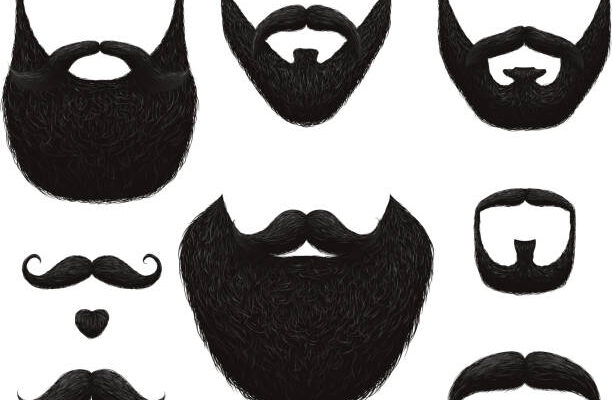Beards have been a symbol of masculinity, wisdom, and style for millennia. While the popularity of facial hair may ebb and flow with the times, the beard has consistently remained a powerful symbol of self-expression and identity. In this comprehensive article, we will delve into the art, science, and history of beards, exploring their cultural significance, grooming techniques, and even their place in modern society. From the ancient Egyptians to the hipster beard revival, the journey of the beard is a fascinating one.
The Cultural Significance of Beards
Throughout history and across cultures, beards have held diverse meanings and significance. Here, we’ll explore some of the cultural facets associated with facial hair:
-
Ancient Egypt: The Pharaohs and Beards
 (Photo from iStock)
(Photo from iStock)
In ancient Egypt, beards played a pivotal role in religious and cultural contexts. Pharaohs, who were considered divine, were often depicted with long, stylized beards as a symbol of their power and divinity. Ordinary Egyptians, on the other hand, were typically clean-shaven. The act of shaving was not only practical but also symbolic of humility before the gods.
-
Greek Philosophy: Wisdom and Beards
 (Photo from iStock)
(Photo from iStock)
In ancient Greece, beards were associated with wisdom, intellect, and age. Prominent philosophers like Socrates, Plato, and Aristotle all sported beards. The beard was seen as a sign of intellectual prowess, and many Greeks believed that facial hair absorbed knowledge and wisdom from the environment.
-
Roman Empire: The Influence of Fashion
 (Photo from iStock)
(Photo from iStock)
The Romans had a complex relationship with beards. In the early days of the Roman Republic, beards were a symbol of virility and strength. However, as the Roman Empire grew, a preference for a clean-shaven face emerged. This shift was partly due to the influence of the military, as a clean-shaven face was more practical for wearing helmets and ensuring a proper seal for gas masks during battle.
-
Middle Ages: A Symbol of Knighthood
 (Photo from iStock)
(Photo from iStock)
During the Middle Ages, beards became associated with knighthood and chivalry. Knights grew beards as a mark of honour, and the length and style of a knight’s beard often signified their rank and status within the order.
-
Renaissance: A Symbol of Artistic Expression
 (Photo from iStock)
(Photo from iStock)
In the Renaissance era, beards once again gained popularity among artists, scholars, and intellectuals. The likes of Leonardo da Vinci, Michelangelo, and William Shakespeare all sported facial hair. Beards were seen as a symbol of creativity and artistic expression.
-
19th Century: The Victorian Era Beard
 (Photo from iStock)
(Photo from iStock)
The 19th century saw a resurgence of facial hair fashion in the Western world, especially during the Victorian era. Men grew elaborate beards, often accompanied by meticulously groomed moustaches. These beards were seen as a mark of masculinity, and various styles, such as the mutton chops and the chin curtain, gained popularity.
-
The 20th Century: Beards and Counterculture Movements
 (Photo from iStock)
(Photo from iStock)
The 20th century brought about significant shifts in beard culture. During the early 1900s, beards went out of fashion, largely due to the influence of military grooming standards and the desire for a clean-cut appearance. However, beards experienced a revival during the counterculture movements of the 1960s and 1970s, with icons like the Beatles and Bob Dylan sporting facial hair as a symbol of rebellion against the establishment.
-
Modern Times: Beards as a Style Statement
 (Photo from iStock)
(Photo from iStock)
In the 21st century, beards have become a prominent fashion statement once again. The “hipster” beard trend, characterized by long, well-maintained facial hair, gained popularity in the 2010s. Beards are no longer solely associated with rebellion or counterculture but have become a mainstream expression of personal style and identity.
The Science of Beard: What Determines Beard Growth?
While cultural and historical factors have influenced the perception of beards, the science behind beard growth is rooted in genetics and hormones. Understanding how beards grow can help individuals groom and care for their facial hair more effectively.
Beard Care and Maintenance
To maintain a healthy and attractive beard, proper care and grooming are essential:
- Cleansing: Regularly wash your beard with a mild shampoo to remove dirt, oil, and dead skin cells. Use a beard-specific shampoo to prevent over-drying.
- Trimming: Regularly trim your beard to maintain its shape and prevent split ends. Invest in a quality beard trimmer or visit a barber for professional maintenance.
- Moisturizing: Apply beard oil or balm to keep your facial hair and the skin beneath it hydrated. This prevents dryness, itchiness, and beard dandruff.
- Brushing: Use a beard brush or comb to distribute natural oils evenly, detangle hair, and maintain a neat appearance.
- Diet and Lifestyle: A balanced diet rich in vitamins and minerals, particularly biotin, can promote healthy beard growth. Additionally, managing stress and getting adequate sleep can positively impact beard health.
The Role of Social Media
Social media platforms have played a pivotal role in the modern beard culture. Platforms like Instagram and TikTok have allowed individuals to showcase their beard styles and grooming routines to a global audience. Beard influencers and bloggers have gained significant followings, further fuelling the popularity of facial hair.
Grooming as Self-Care
For many men, grooming their beard is a form of self-care. Taking the time to cleanse, trim, and style one’s facial hair can be a relaxing and meditative ritual. Beard grooming also promotes healthy skin and hair, contributing to overall well-being.
Conclusion
Beards have a rich and diverse history, ranging from their symbolic significance in ancient cultures to their modern role as a form of self-expression and style. The art, science, and history of beards have evolved over the centuries, reflecting changing cultural norms, fashion trends, and individual preferences.
In contemporary society, beards continue to be a powerful symbol of masculinity, wisdom, and personal identity. Whether you choose to embrace a full, bushy beard, a meticulously groomed moustache, or a clean-shaven look, your facial hair is a canvas for self-expression and a reflection of your unique identity. As beard culture thrives in the 21st century, the journey of the beard remains a fascinating and ever-evolving one.
Reference:
The Manual
Want some amazing jewellery making ideas, that too at your home, what are you waiting for?, click on the link below:
Homemade Jewellery making for kids

